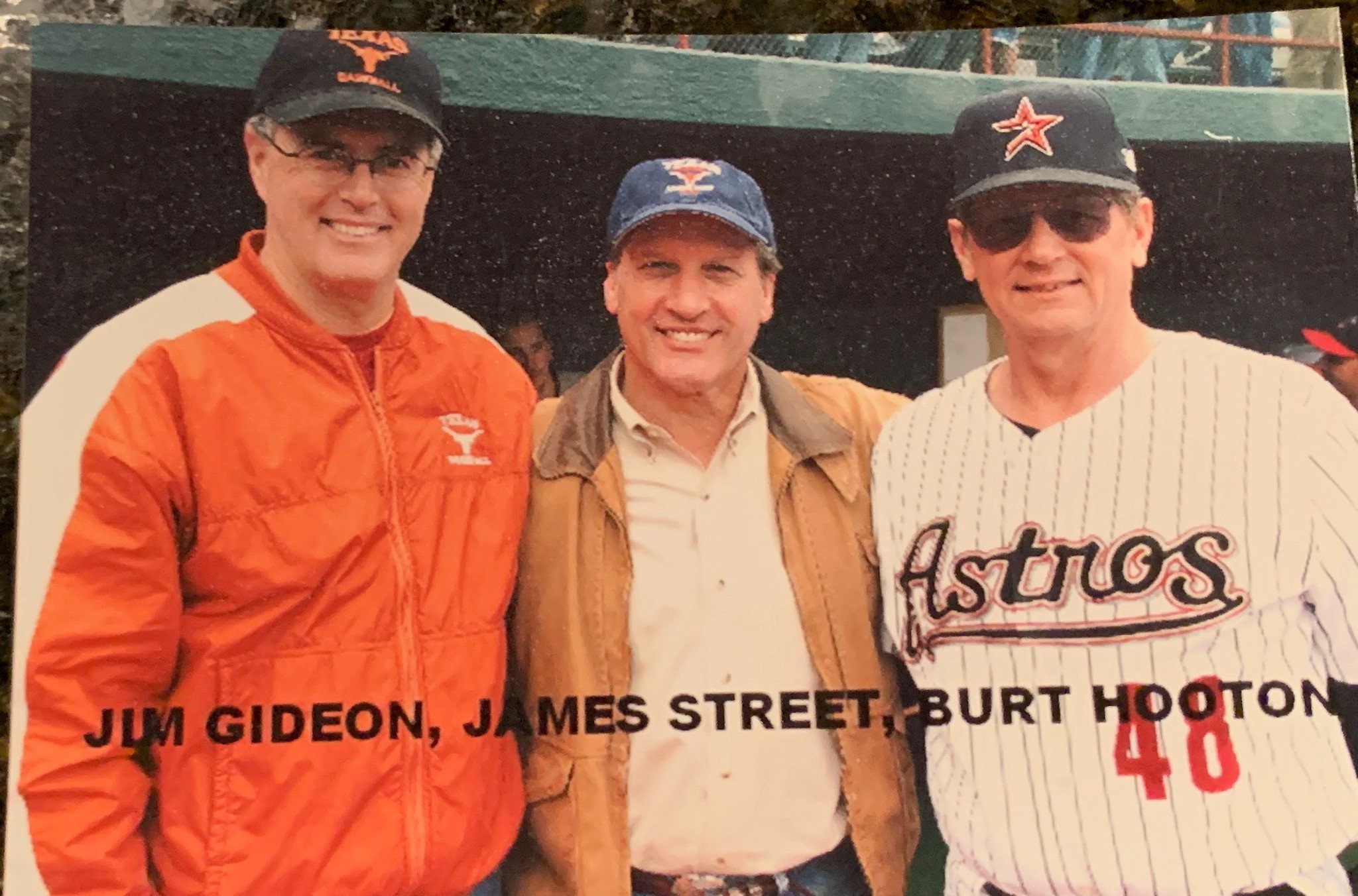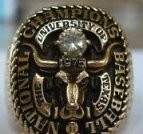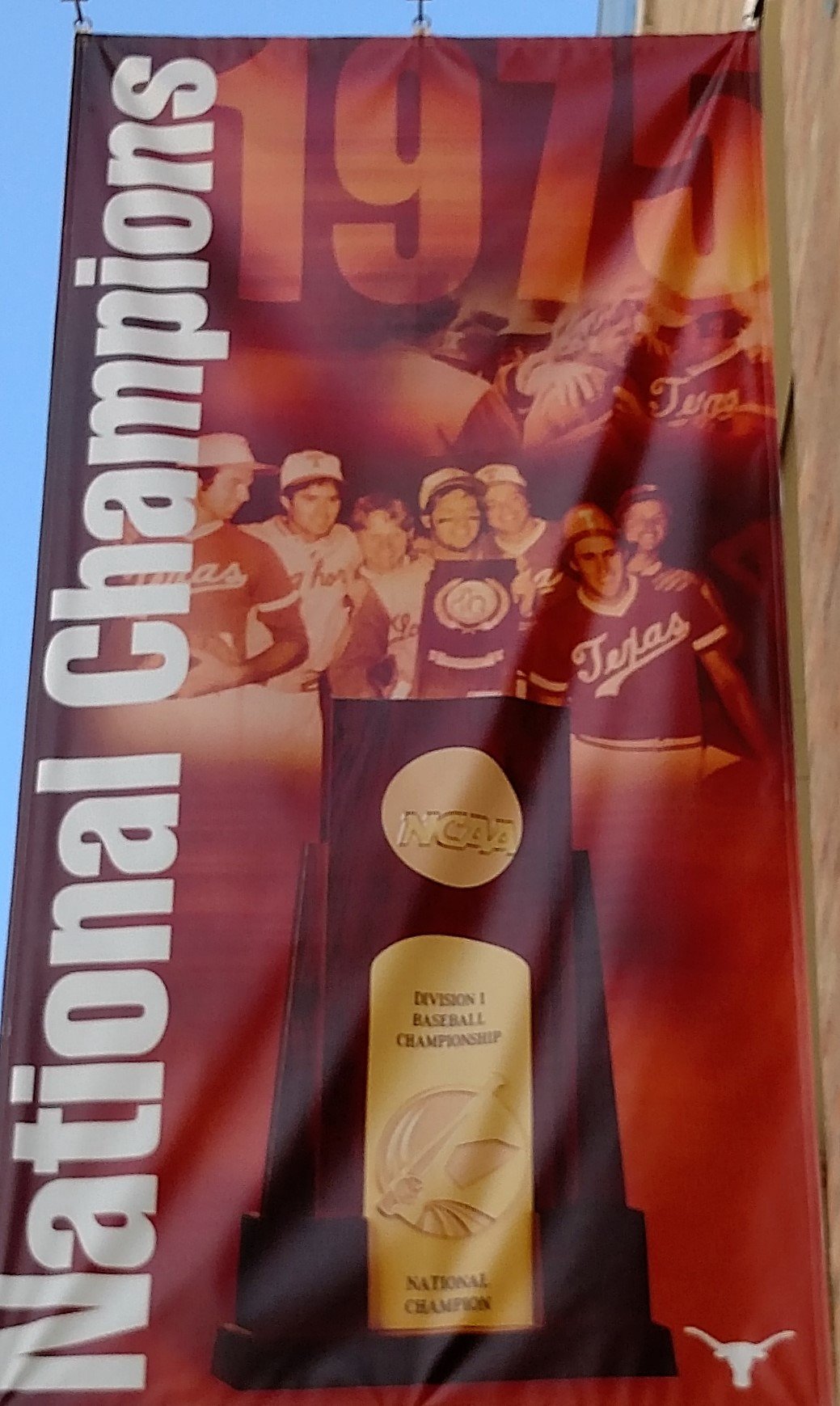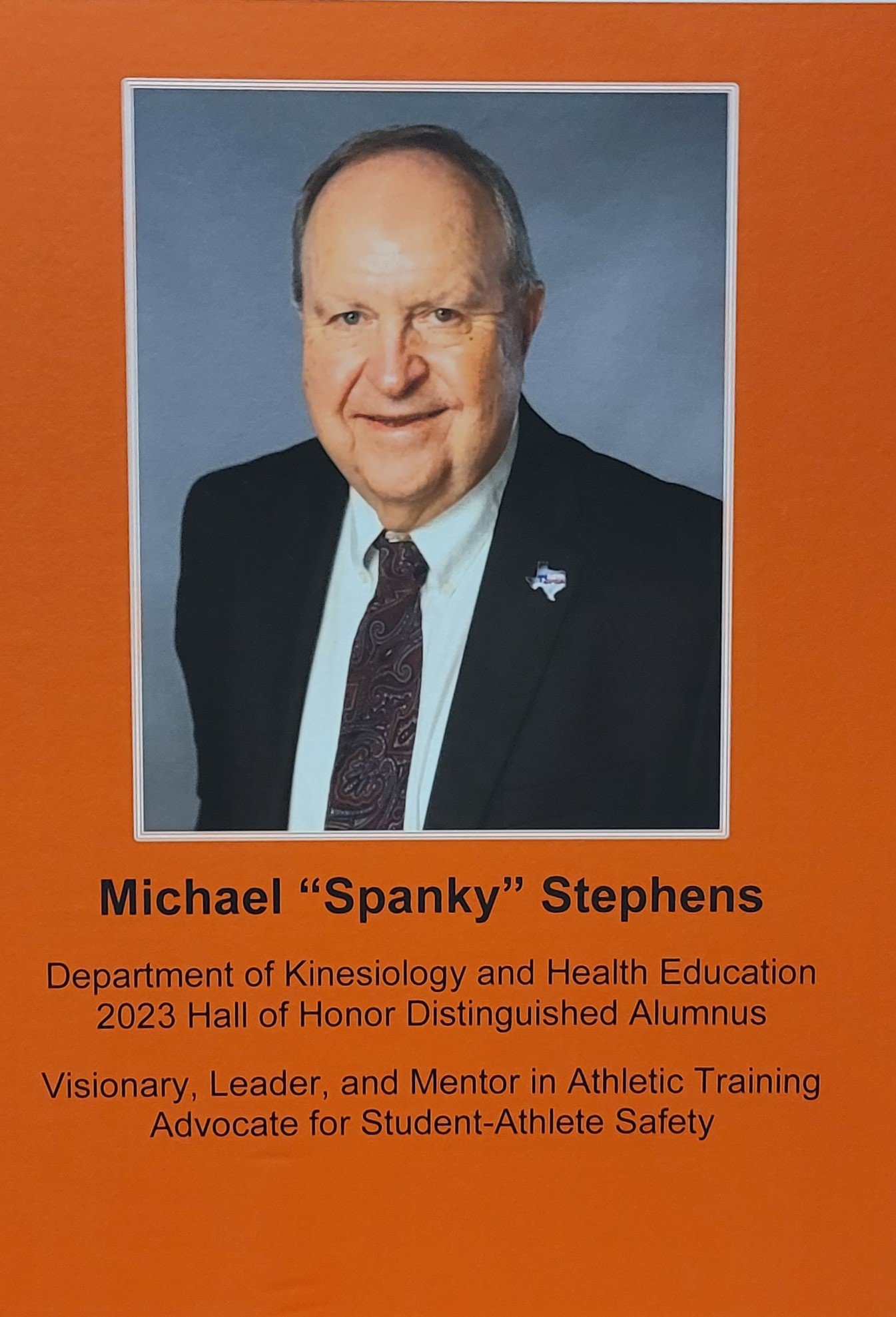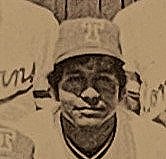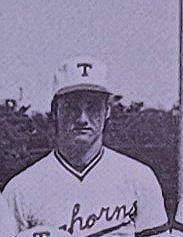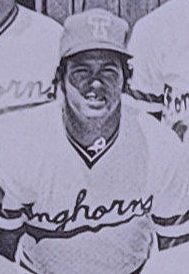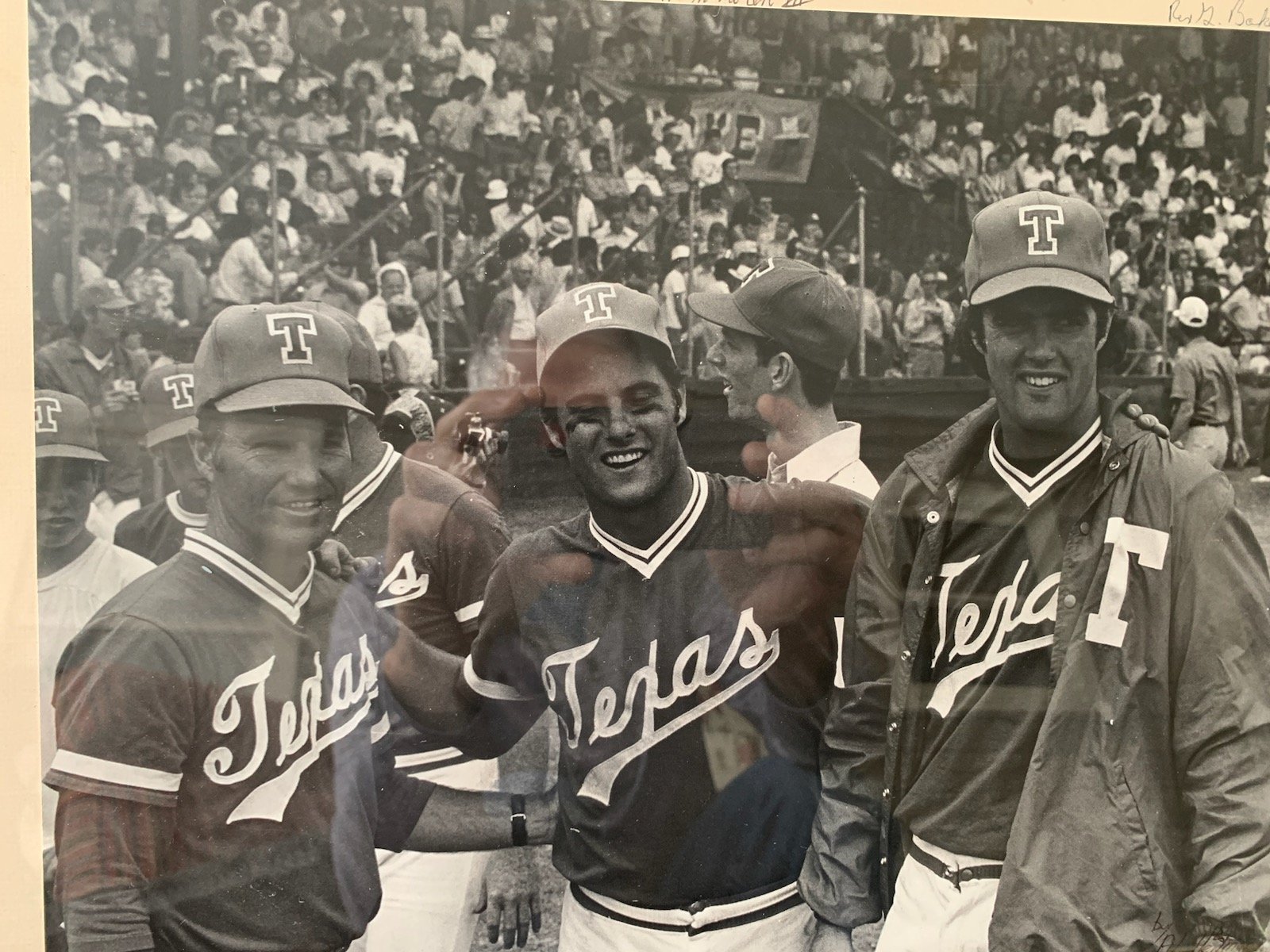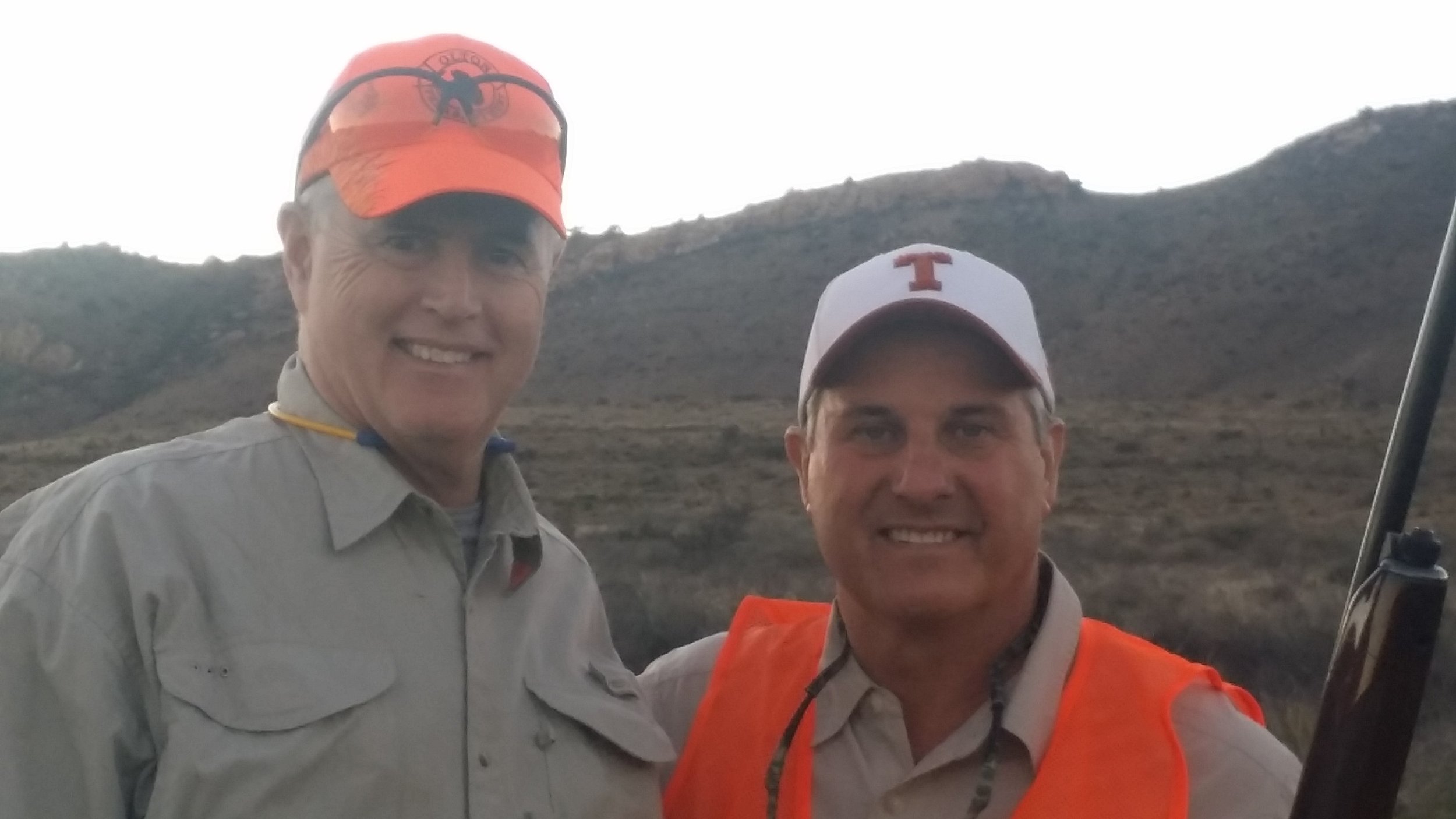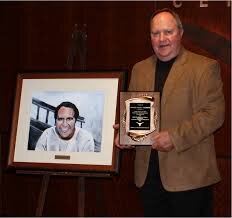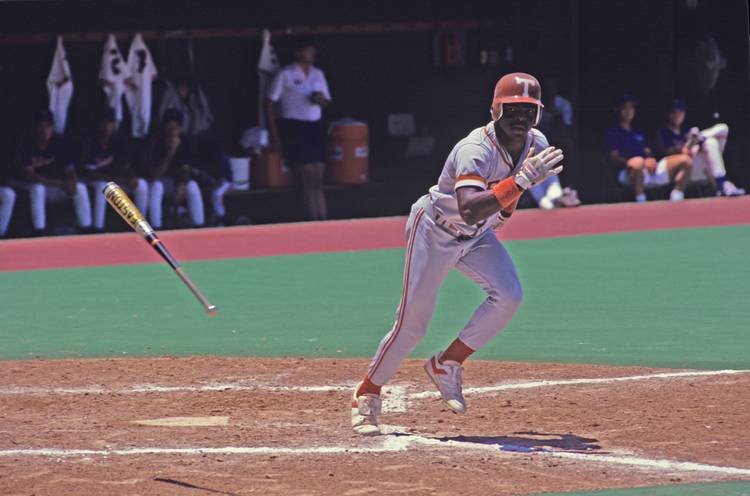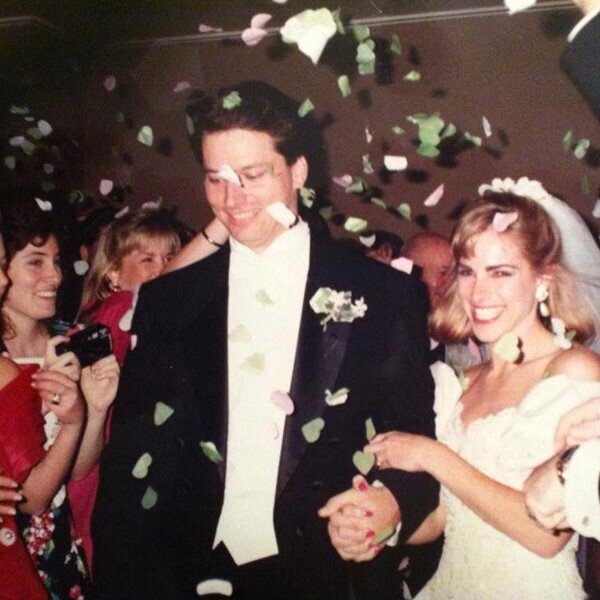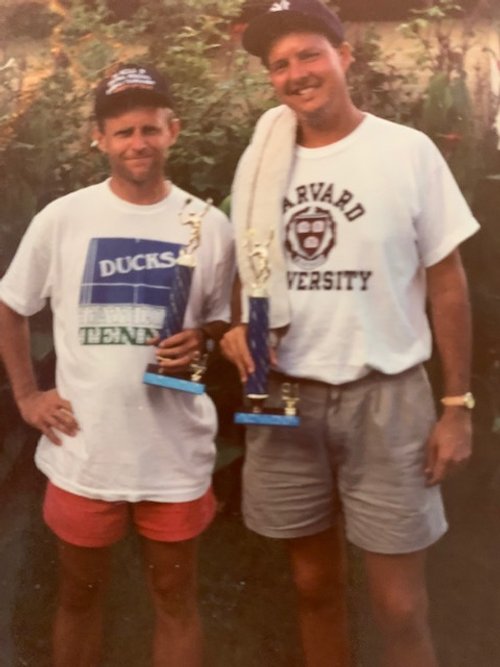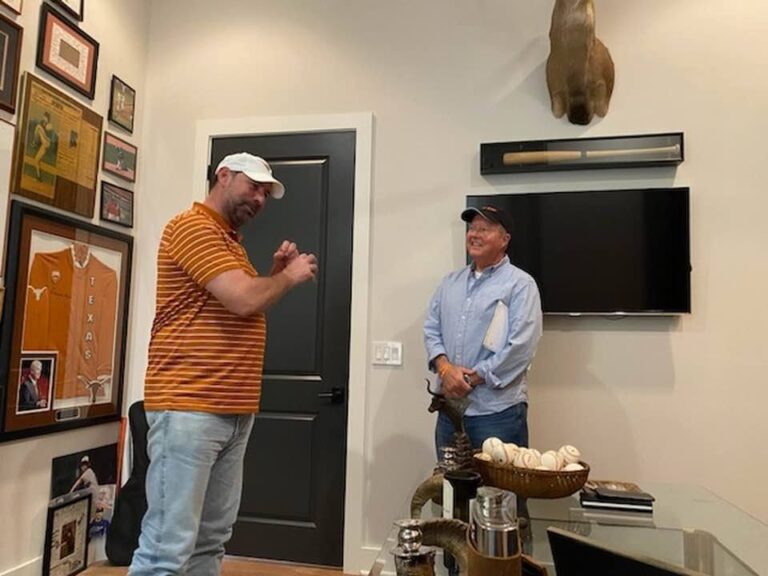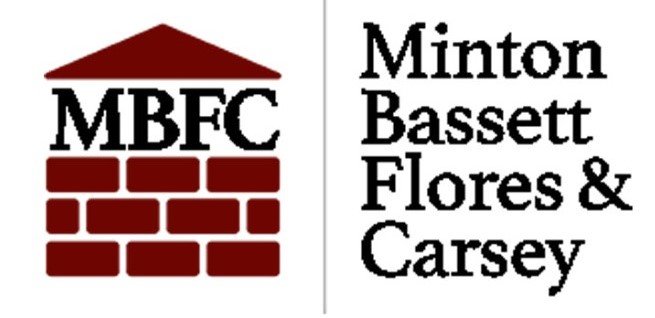1974 Jim Gideon – baseball
The oral history podcast, text, and photos of College Baseball Hall of Fame Longhorn inductee – Jim Gideon are
sponsored by:
ABEL Engineering responded to the First Gulf War when Saddam Hussein set the Kuwait Oil Field (about 1000 wells) on fire in an environmental terrorist act.
ABEL provides project management and engineering for out-of-control wells. ABEL Oil Tools, Office: +1-713-355-3838, I Phone: +1-713-202-1505
Here is the link to Jim’s oral history podcast with photos and written content.
Jim Gideon says “I was fortunate to be part of three of the greatest teams in UT baseball history. In three years, we compiled a 163-21 record, won 3 SWC conference titles, participated in 3 College World Series, and won one national championship.”
Jim shares his story of playing baseball in high school, as a Longhorn, and professionally. His is a passionate story full of high peaks and low valleys.
the Early Years
As is true for most successful athletes, Jim Gideon had a high school coach that saw potential in him when he did not. Coaches do that! Most young athletes don’t understand a coach’s power and influence on their lives until decades later. At some point, athletes finally understand that Coaches are the Holy Grail of teaching, ingraining in our hearts, “life is best traveled with a teammate mentality, a work ethic in tow, and self-reliance as the goal.
Jim shares that during his junior year in high school, a coach’s vision and belief in him led to a state championship for Bellaire High School and a runner-up to the state championship in Jim’s senior year.
His two-year record in high school was 31-4 with an e.r.a of .30.
The road to Texas was a family affair.
Jim was drafted out of high school in the 3rd round by Detroit but was never going to sign. Jim had burnt orange blood. His parents and two older brothers attended Texas. Brother Joe Gideon played for Coach Bibb Falk from 1963 to 1966. After graduating, Joe was the freshman coach for players such as Lou Bagwell and Larry Hardy.
Photo is Joe Gideon scoring after hitting a three-run homer against Texas A&M
Jim says about his brother, “since Joe was ten years older than me, he would bring me UT sweatshirts home from school.” “I can remember wearing these white Longhorn sweatshirts all year long, even in Houston during the summer.” “I also had the opportunity to be a bat boy for Coach Bibb Falk while my brother was on the team.”
The car accident
On a trip back to Austin to take some advanced placement tests, Jim remembers, “I was involved in a car crash near Bastrop.” “While I walked away from the crash, injuries to my neck would surface several years later, effectively ending my pro career.”
The University of Texas
Wortham, Flores, and Gideon combined for 120 career wins, not appearances but wins!!).
There were nine players in his recruiting class. Six played pro baseball, three made it to the majors, four were inductees into the Longhorn Hall of Honor, and three were inductees into the National College Baseball Hall of Fame. After baseball ⚾ all were successful in their chosen profession or the business world. There is a doctor, a lawyer, a CEO of a major oil and gas company, a president of the Texas beef Council, and the rest are successful businessmen. Seven are still married to their college sweethearts, who were at the games watching their boyfriends played nearly 50 years ago.
1973
Jim Gideon arrived on campus in the fall of 1973 to an ominous beginning to his years as a Longhorn. In his first start, he was yanked in the 3rd inning. After that, he started a couple more games but said, “ I never found the rhythm I had in high school” because “there was no pitching coach to help me work through my issues.” Still, Jim contributed to the team as a relief pitcher in conference, playoff, and the College World Series. He finished his freshman season with four wins and four losses.
1974
With one year’s college baseball experience behind him and after seeking help from a summer pitching coach in Colorado, he returned to the team with more confidence. Jim points out that “his freshman classmate, Richard Wortham, was coming off a tremendous first year and was named to the freshman All-American team.” Jim continues, “there was no question that he was the team’s ace,” but there were still open spots available in the pitching rotation.
Jim remained focused and competed at a high level during practice. Just as important this year, Jim says, “I kept quiet and worked hard.” His supercharged drive and stoic demeanor did not go unnoticed by his teammates. Someone tagged him with the nickname “ICEMAN,” and it did not melt. Jim concedes years later that he always knew he was no ICEMAN, but the portrayal allowed him to withstand some pressure of playing ball at Texas.
His image (Iceman) and focus paid baseball dividends this year. On four or five occasions, Coach used him in relief in the second game of a doubleheader after he started the first game.
THE RESULT: Jim set a university record and tied a national record with 19 wins.
Pressure and Division I baseball are synonymous. Teams who don’t know how to handle the pressure suffer lower performance standards in challenging games. The fact that the Longhorns had not won a national championship since 1950 and Coach Gus’s CWS qualifying teams from 1967 to 1973 won no national championships put significant pressure on the 1974 team
Jim concedes that the pressure to win hurt the team’s performance. Jim admits, “I did not respond to that challenge and was pulled in the first innings against the defending National Champion USC team.” Texas finished third at the CWS.
1975 – How to relieve pressure on the Road to the CWS championship
1975 was the first year to play in Disch Falk Stadium. It was a perfect stadium for the 1975 team. Jim says, “We were built to win there.” Once again, the Horns had a great chance to win the national championship. The 1975 team had pitching, excellent hitters, and speed leading to 23 wins in a row during the conference and the SWC championship. Texas had no problem sweeping through regionals and qualifying for another chance at the CWS championship in Omaha.
Jim says in 1975, “we had a few breaks that kept us alive in the series. We won our first game but lost the second game to fall into the loser’s bracket.” There was a feeling of deja vu “all over again” since Texas, in prior CWS tournaments, had struggled from the losers bracket.
Terry Ray
In the loser’s bracket game against Seton Hall, we jumped to a 10-to-nothing lead in the first inning. However, at the end of the game, with Texas leading 12 to 10, Seton made a comeback and loaded the bases. Coach decided to send in Terry Ray, struggling with sore knees, as the relief pitcher. Fortunately, a heart-stopping fly-ball hit to the warning track was caught, and Texas won.
Even though Texas won the game, this season at Omaha felt a lot like all the others.
Jim remembers, “we left the stadium quietly, even though we were moving on to the next round, and climbed aboard our yellow school bus to return to the hotel. As we waited to get off the bus, Coach Gus gave us our typical postgame comments but added something at the end that proved to be what we needed. He said, ‘although he wasn’t a drinking man, if he was, he would probably go out and get drunk tonight’. The pandemonium of everybody trying to climb out of that bus was extraordinary, with a few Longhorns getting caught trying to climb through the windows. Unfortunately, all were too large to accomplish this feat, as team members had to help those dangling by their legs to get off the bus. We had the next day off, so we had plenty of time to recuperate.”
Lucky Break #2
The next break was compliments of head trainer Spanky Stevens. He was assigned to go out and draw to see which of the three teams tied would get the bye to the final game. Once the team saw Spanky try to jump with excitement, we knew we had drawn the bye and would be playing for the national championship in two nights.
Spanky did more than just flip a coin to win a series. In addition, to all the honors he has received over the years, he was recently inducted into the Department of Kinesiology and Health Education Hall of Honor as a Distinguished Alumnus.
Lucky Break #3
Richard Wortham was going to be our starting pitcher.
Richard was disappointed with his pro draft pick at Omaha and determined to tell someone how disappointed he was.
The reason Richard Wortham’s pro career stock pick had fallen was because he suffered a leg injury in a fall when an elevator broke while he is working at Gregory Gym. At one point, the doctors questioned if he would ever walk again. He did more than walk again, finishing the season with a 14-1 record, and he pitched a four-hitter to win the national championship for the Longhorns.
Unfortunately for South Carolina, Richard took his frustration out on them.
Jim says, “ Richard did what no one at UT had ever done before, which was to pitch a complete game victory in the National Championship game. It was spectacular, and we all celebrated at the end, knowing what we had accomplished. Looking back on that 1975 team, it was obvious that this was a special group of players and coaches—the upperclassmen led by the example of hard work but also of playing winning baseball. We didn’t have a deep team, as there were only a few players that Coach Gus used on a rotational basis.”
“The pitching staff was manned by just a few pitchers… myself, Wortham, and Martin Flores. Terry Ray was a relief pitcher, Frosty Moore was a relief pitcher, and Don Kainer pitched several midweek games. Our season ended with our record of 59 and 6. Years later, this team was voted the second-greatest college baseball team in NCAA history. By winning the 1975 national championship, this team set the tone that led to three more national championships and the moniker as the #1 in national brand in college baseball.
Jim states with passion, “We carry that distinction with pride!”
Professional baseball
Jim was the number one draft pick of the Texas Rangers in June 1975. After pitching a few months in the minor leagues at 21 years of age, he was called up in September 1975. The Rangers were in last place. Jim says, “ I pitched OK and was fortunate to leave the game in the 6th inning with a close score and ended up getting a no-decision.” “ I enjoyed the experience and looked forward to getting another chance to pitch in the big leagues, but that chance would never come.
Major League Baseball and the players union went on strike the following year, and the Rangers decided to send all the young pitchers to AAA ball. Jim was 22 years old, pitching in a high minor league and doing OK when he was traded to Minnesota. It was a personal and devastating setback for a Texan. Nothing went right that year after the trade, and the following season at 23 years of age, more disappointment followed. Jim says, “The Twins organization lost faith in me and sent me down to A ball to get back to the quality pitcher they had traded for.”
The Car wreck injury resurfaces
It was in A ball that he noticed something wrong with his pitching shoulder. Jim comments, “The muscles in the back of my right shoulder had deteriorated due to an entrapped nerve in his neck caused by the bone spur incurred in the car wreck before my freshman year at UT.”
Jim had surgery to relieve the entrapped nerve and started rehabilitating. UT trainers helped him get back in shape, and at 25, he returned to professional baseball. Finally, he says, “I was throwing better,” but with no rehab available, the problem returned.
Life without baseball
“At that point, I came home from AA ball to determine what I was going to do with the rest of my life.” He was in and out of a couple of jobs in financial services and real estate, but neither was a fit for him. Eventually, Jim received an excellent job opportunity from UT ex. Bill Duvall of Lincoln Properties, but he made a disastrous decision to pass on it and instead chose to have another surgery and, at 28, tried one more time in AA baseball. Unfortunately, the shoulder failed, and with sadness in his heart, reality set in, and he realized it was time to come home and find a job.
Friendship Bonds last a Lifetime.
“I was fortunate to have had a friend who worked at New York Life, Tom Ball, a UT baseball Letterman, who helped me get started in the insurance business. While I wasn’t great at selling insurance, I did find a niche that I could be successful at. I lasted about 30 years and retired at age 66.”
“Fortunately, following my final stint in AA ball, I met my wife Amy, and we were married, and a few years later, we added our son Matthew. We have lived in the same house in Austin for 39 years. I played locally in amateur leagues, and while I did not have Major League stuff, I still had enough to be effective in these leagues and have fun. Then in 1989, they began the first year of the Senior Professional Baseball League in Florida. I tried out for it, made a team managed by Earl Weaver, and was able to be effective pitching against former major leaguers that I had been watching on TV in the World Series. “
As I was leaving, I asked Ed Figueroa, one of the former Major League pitching stars, “if he thought I would have been a good Major League pitcher since I had only pitched in one game ever over 15 years ago?” His answer was “that we all get hurt sooner or later and I just got hurt sooner than everybody else.”
“With that I left and never had any desire to play pro baseball again. I did continue to pitch locally with my friends on senior baseball teams here in Austin and finally, in the year 2000, went to the Nike Senior Olympics and helped pitch our team to a silver medal. That’s when I walked away at age 47. The next 10 years all I did was coach youth teams that my son was on and throw batting practice. “
Jim’s Reflection on College life
“I was able to take advantage of my time at UT by being a part of different groups. Besides being on the baseball team, living for 2 years on campus and eating at the athletic dining hall, I participated in the Greek fraternity life and participated in many of those activities. I am still particularly close to the fraternity brothers with whom I pledged during my freshman year, and while partying with these guys contributed to my disappointing freshman season, it was a time I would not do over. I just learned what my limits were the next two years and combined them so I could be successful.”
Jim recalls, “I also liked going to class and I made sure to attend class as much as possible, and because I was good at studying, I was named to the Academic All-American team twice. Add that to being named First Team All American and I am on a short list of only 23 UT athletes to have ever had that distinction as well as being the only baseball player.”
In reflection Jim says, “I was fortunate to have my three years at UT following my car wreck. Those three years allowed me to go to school, get an education, create lifelong friendships, and win championships. Through all of this Jim says, “I feel blessed to have played on a high school State champion and a collegiate National Champion team.”
List of Awards
Bellaire High School Hall of Fame
Two-time First Team All-State team high school
Two-time First Team All-American while at UT
Two-time Academic All-American
Only baseball player at UT t win both All-American and Academic All-American in the same year
First team All Time SWC baseball team
MVP of the 1975 National Championship team
Set school record with 19 wins in 1974
Set school record with a 17-0 undefeated season in 1975
Pitched first game at Disch Falk Field
Houston Independent School District Hall of Honor
Longhorn Hall of Honor
National College Baseball Hall of Fame
1st round draft pick of Texas Rangers 1975
Amateur Athlete of the Year State of Texas 1975
Jim Gideon is a Longhorn Brand Builder




